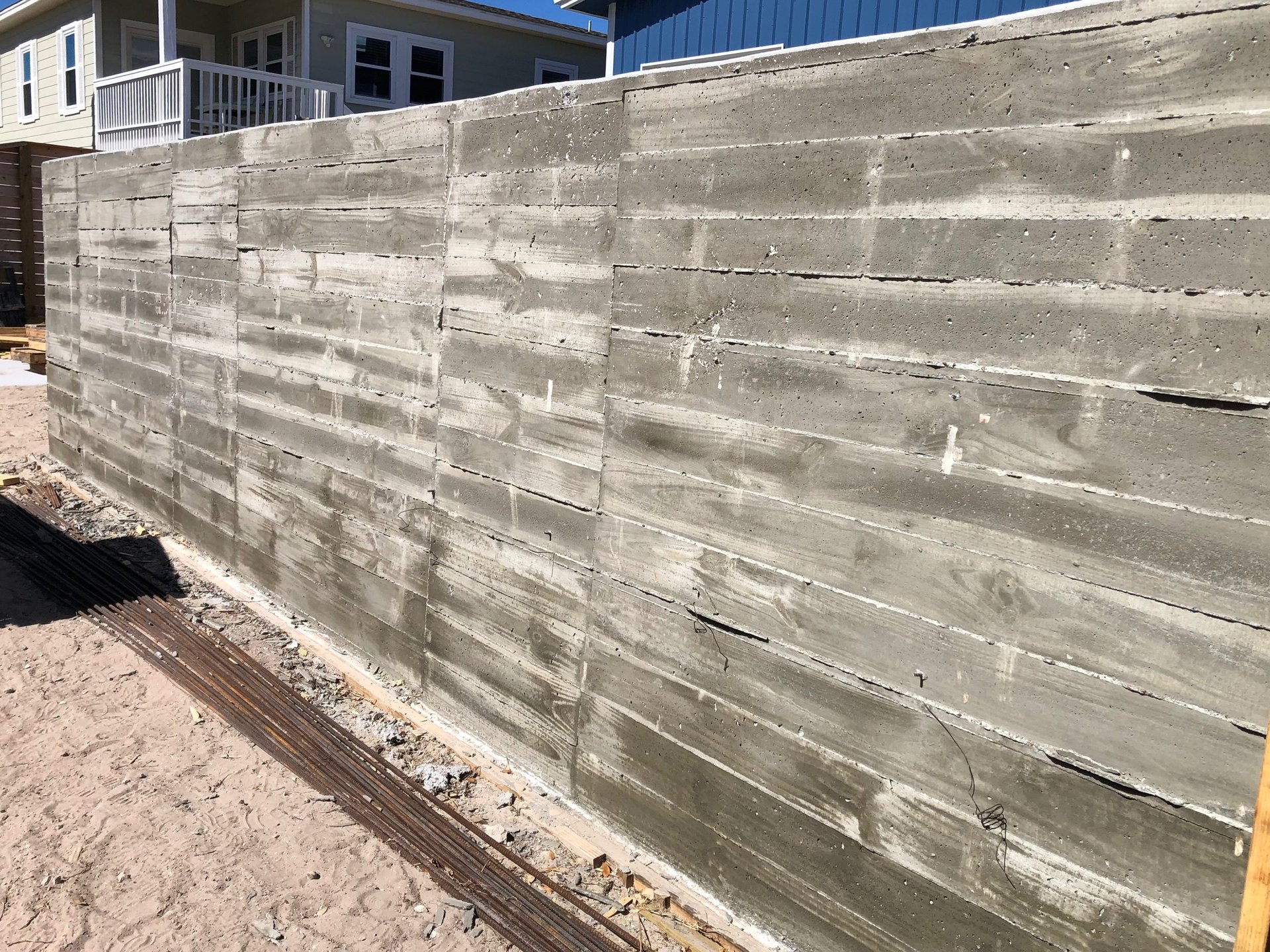
#12: Concrete Wall: Take 2!
Pouring the concrete wall two weeks ago started off just fine. Great, in fact. Nick and I and the kids had our particular jobs that we immediately got in the groove of, considering we’d never poured a wall as a family of four before. We’d only poured driveway parts seven times before, and they’ve all been smashing successes. But our eighth pour ended up being . . . just smashed.
Nick had set up the forms such that there was ample bracing on the north side of the wall (facing our property), but he decided that in order for the concrete truck to get close enough for its chute to reach, he needed to not have angled bracing on the street side. Instead, he fashioned metal wires at intervals to be tightened at the top and through the forms to help keep the concrete from pressing outward. We planned to install long panels for the second and third tiers after pouring the bottom level, which already had forms in place. It would be heavy and cumbersome to lift the panels into place, but totally doable, as we found from our dry runs. Our biggest concern was a blowout from if the wires couldn’t withstand the pressure of the concrete.
So . . . back to our “starting off great” concrete day. We first poured and vibrated the bottom layer on the east, and then moved to the west side of the telephone pole and did the same. We fastened the next level of panels on the street side above the first level and got busy with pouring the mid-level. As the boys continued vibrating westward, my gaze drifted down to a <gasp> bulge in the forms for the eastern wall. Hold up! Pause! We have a blowout! Can we push the forms in with the Kubota’s bucket and carry on with finishing the pour, hoping for the best? Or is the whole “poured concrete” idea a bust and we should just lay CMU instead? All of those desperate thoughts met with eager vocal cords and burst out of my mouth. Nick calmly said, “No, we can’t do CMU. We’re committed.” I got myself a loyal guy, let me tell you.
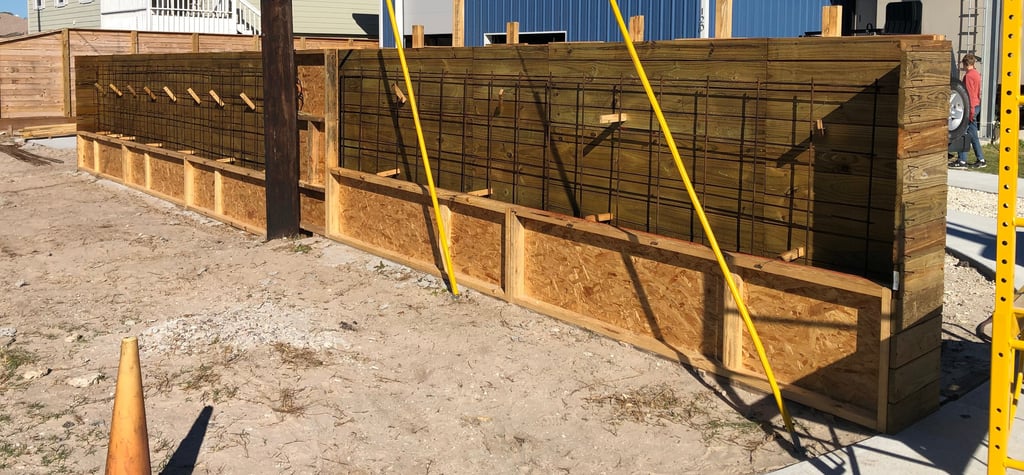

Disappointed, we sent the half-full concrete truck away, along with our goal of finishing the wall that day, and focused on fixing the mishap. We propped the Kubota against the bulging wall and picked away at the green concrete so it fell into the bucket, then dropped it into a pile of sadness to dry on the ground before its way to the concrete recycling station. Even though it was a bummer concrete day, it could’ve been worse. For one thing, the western lower level was successfully poured, so as long as the cold joint with the next pour looks ok, that’ll be a bit less to have to redo. (Fingers crossed for consistency in concrete mixes!) For another, even more important thing, since the concrete was still green, we were able to clean out the keyway in the footing and around the rebar. And another blessing to count was we could reuse the panels since they didn’t break.
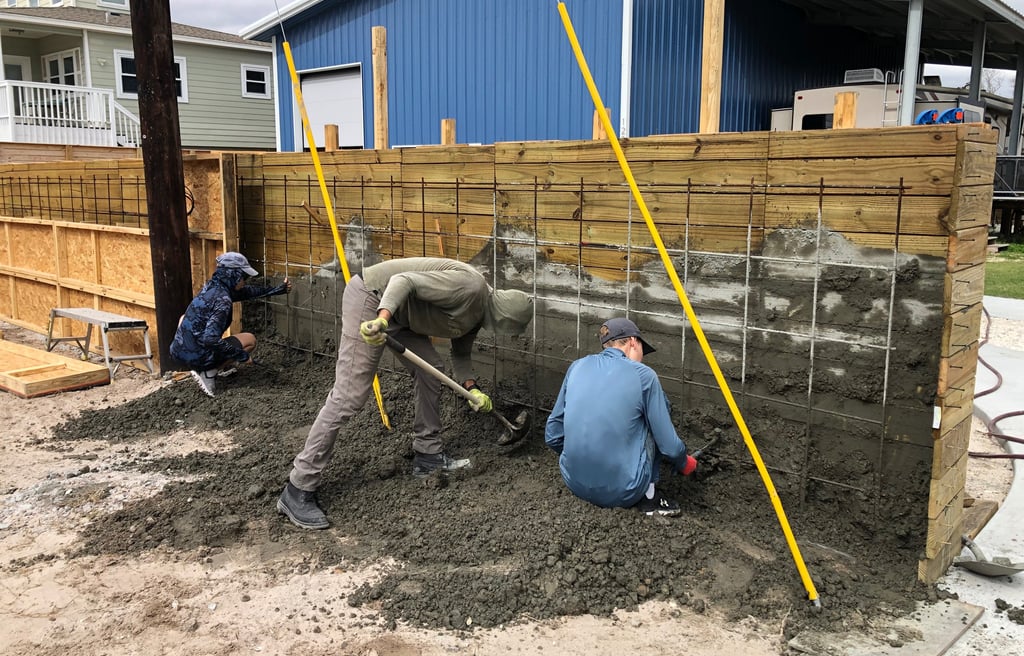

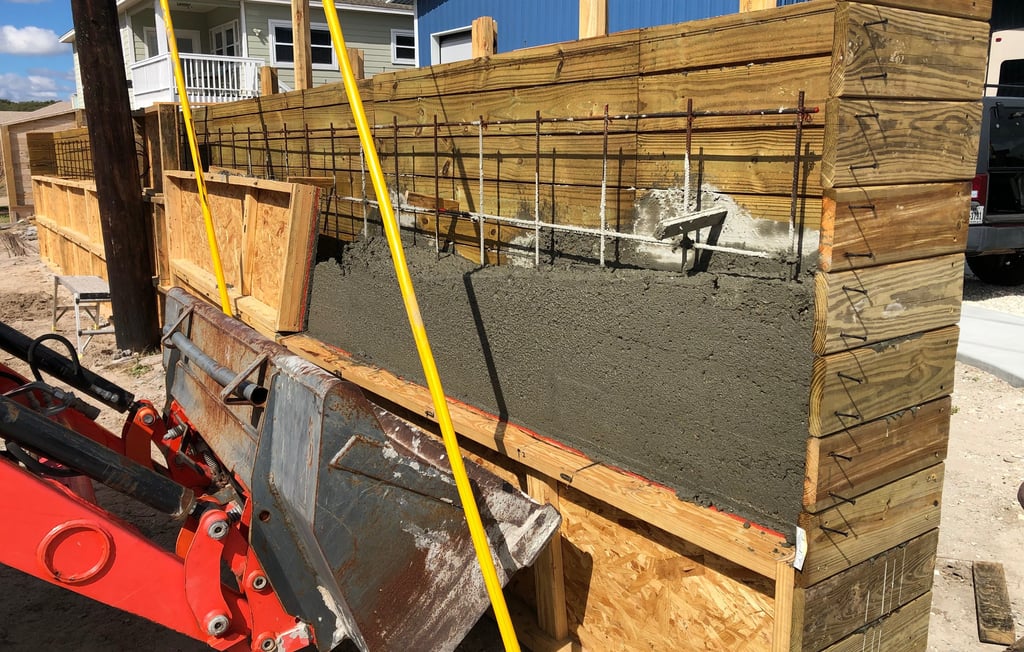

In an effort to not have to pour the wall a third time, within the next few days, Nick reinforced the panels with brackets and replaced the flimsy wires with tried-and-true snap ties. We just didn’t want the big dimples left in the concrete from the plastic cones of the snap ties, so we removed those, knowing we’d just cut the metal rods to size after we take the forms off. This is what the eastern side of the wall looked like when it was all buttoned up after the second pour, four days later:
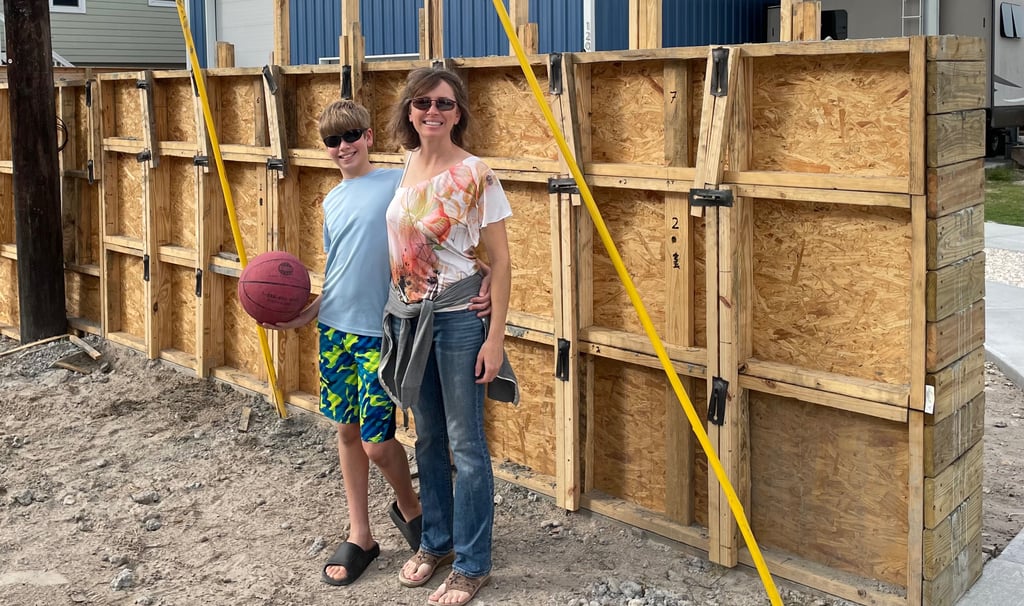

For that second wall pour, a few friends came by to lend a hand with the wall, even though we told everyone we’d be fine. In retrospect, we are so glad they didn’t listen, and we thank them for all their hard work and help. Mike helped prep the forms and pour, Ettore helped pour and later wreck the forms, and Mitch (not shown) helped with the pour.
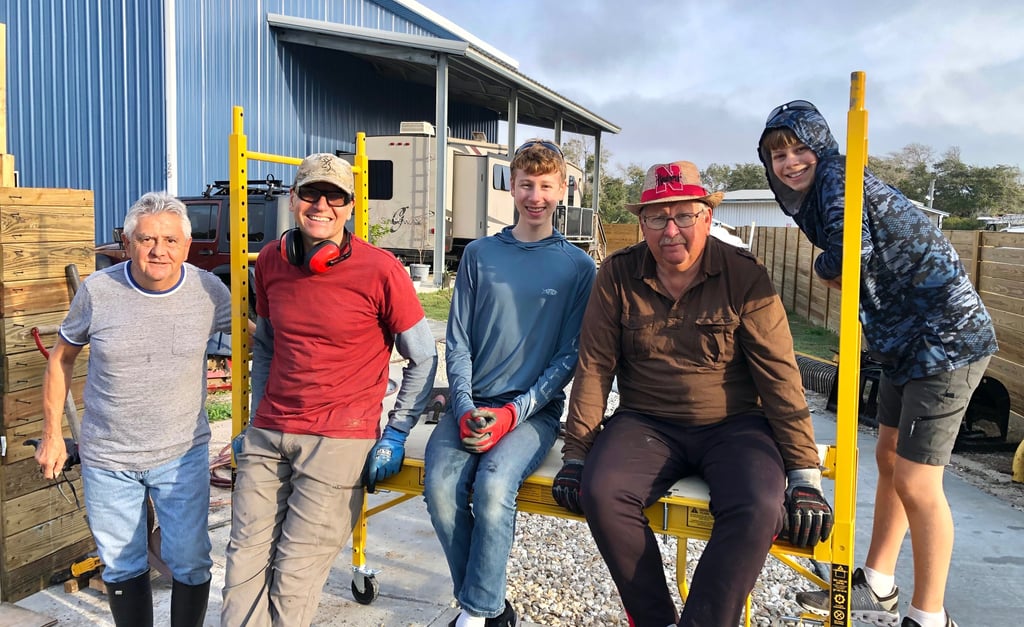

On that beautiful day after pouring the wall, we celebrated by eating outside at Moondog and hanging out at Rockport Beach.
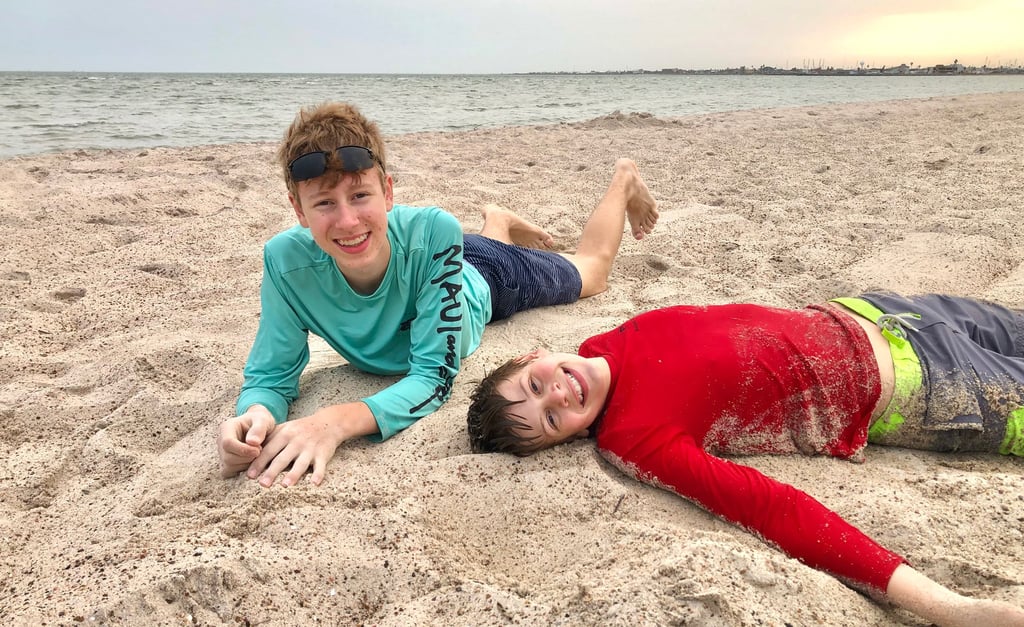

Calvin put on his thinking cap to look smarter, I believe:


The moment of truth came a few days later when we wrecked the forms. You can now uncross your fingers and let out your breath. We are elated to expose just what we wanted! The cold joint can only be seen on the non-street side, a faint symbol of perseverance. And there were only a couple of minor honeycomb spots speckling the surface with character. The wood texture is apparent, and the horizontal and vertical lines add depth and pattern. I guess the second time’s the charm!


